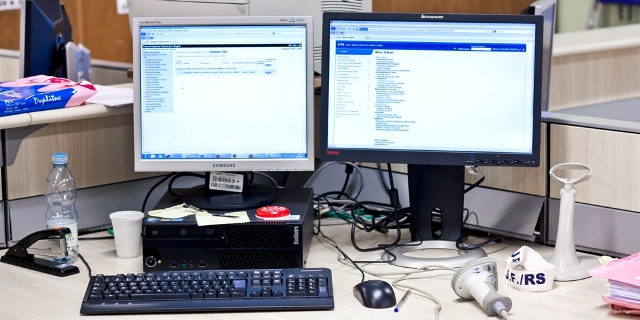
Texto Jurídico no Processo Eletrônico Estudo sobre legibilidade e leiturabilidade.
Resumo
RESUMO
Este trabalho pretendeu traçar linhas básicas sobre a apresentação de material virtual no meio jurídico. Os documentos eletrônicos são uma realidade em todas as áreas do conhecimento. É preciso readequar a apresentação no que se refere a estilo, gramática e tipografia para tornar o texto de fácil leitura e com as informações mais facilmente detectáveis. No meio jurídico, o processo eletrônico é uma realidade. Os advogados precisam reconhecer a necessidade de alterar a forma de apresentação de seus pleitos, beneficiando o leitor. Essa mudança não será uma garantia de sucesso, mas adequadamente empregadas, as técnicas podem contribuir para a atenção do leitor.
Desde os sumérios, há 3 mil anos, textos e sua tecnologia de suporte têm evoluindo constantemente. Wilbur Schramm diz que foi necessário pelo menos 50 milhões de anos para a sociedade evoluir da linguagem falada para a escrita, cerca de 5000 anos da escrita para a impressa e 500 anos da impressa para o desenvolvimento de meios som-sinais (fotografia, telefone, rádio, televisão) e 50 anos para os primeiras comunicações via computador.
Referências
CARDOZO, B.J. Law and Literature, in LAW AND LITERATURE AND OTHER ESSAYS AND ADDRESSES 7 (Fred B. Rothman Publications 1999).
BERNARD, M., MILLS, M., PETERSON, M., STORRER, K. A Comparison of Popular Online Fonts: Which is Best and When? Usability News 3.2[Online], 2002. Disponível em : http://tinyurl.com/5svgl5l
BIX, L. The Elements of Text and Message Design and Their Impact on Message Legibility: A Literature Review. Journal of Design Communication (4) 2002.
CHAPARRO, B.; BAKER, J.R.; SHAIKH, D.; HULL, S.; BRADY, L. Online Text: A Comparison of Four White Space Layouts. Usability News 6 ( 2), 2004.
DARNTON, R. The New Age of the Book. The New York Review of Books, 1999. Disponível em: http://tinyurl.com/6guxsd
DERNBACH, V. A practical guide to legal writing and legal method, 2002.
DUBAY, W.H. The principles of readability. Califórnia : Impact Information, 2004.
Dworsky The little book on legal writing. NY: Fred Rothman Pub, 1992.
ELWELL, C.C.; SMITH, R.B. Practical legal writing for legal assistents. Thompson Learning : Washington, 1996.
FRANCO, G. Como escrever para Web. 2009. Disponível em: http://tinyurl.com/6kft9jt
HUDDLESTON, S.A. Putting the Right (Type) Face on Your Appeal, 27 Conn. Law Trib. 43 2001.
KIRK, K. Writing for readability. Virginia : ASTD Press, 2007.
LeCLERCQ, T. Expert legal writing. Texas : Univ. Texas, 2002.
MANEN, M.; ADAMS, C. The Phenomenology of Space in Writing Online. Educational Philosophy and Theory, 41(1): 2009.
MARTINSEK, A. Legal writing: how to write legal briefs, memos and other legal documents in a clear and concise style. New York : Kaplan Inc, 2009.
MCGOVERN, G.; NORTON, R.; O’DOWD, C. The web content style guide. Financial Times Prentice Hall, 2003. Disponível em http://tinyurl.com/6yqfpmx
MORET-TATAY PEREA. Do serifs provide and advantage in the recognition of written words? Journal of Cognitive Psychology, 23:5, 619-624, 2011.
NEWBOLD, N.; McLAUGHLIN, H.; GILLAM, L. Rank by readability: document weighting for information retrieval Lecture Notes in Computer Science. V. 6107 (20-30): 2010.
PAINTER, M.P. Legal writing 201. 30 suggestions to improve readability or how to write for judges, not like judges. Disponível em .
RABINOWITZ, T. Exploring typography. NY: Thomson, 2007.
ROBBINS, R. A. Painting with print: Incorporating concepts of typographic and layout design into the text of legal writing documents. 2004.
SOUSA, Miguel. Guia de tipos: métodos para uso de fontes de PC. Disponível em:
http://tinyurl.com/6hfpjqj
TINKEL, K. Legibility readability. What make type easy. Disponível em:
http://tinyurl.com/6799nzn
MANEN, M.; ADAMS, C. The Phenomenology of Space in Writing Online. The University Educational Philosophy and Theory, V. 4( 1): 2009
YOKOMIKO, J.E., LUKASOVA, K., FONTELES, D.S.R., MACEDO, E.C. Movimentos sacádicos durante leitura de texto em crianças e universitários bons leitores. O Mundo da Saúde, São Paulo: 2008, abr/jun 32(2): 131-138)
REINARD, J.C. The Role of Toulmin's Categories of Message Development in Persuasive Communication: Two Experimental Studies on Attitude Change" Harvard Journal of Law and Public Policy 195, 207, 1984.
Apontamentos
- Não há apontamentos.

Este trabalho está licenciado sob uma Licença Creative Commons Attribution 3.0 .

ISSN nº 2317-8329
